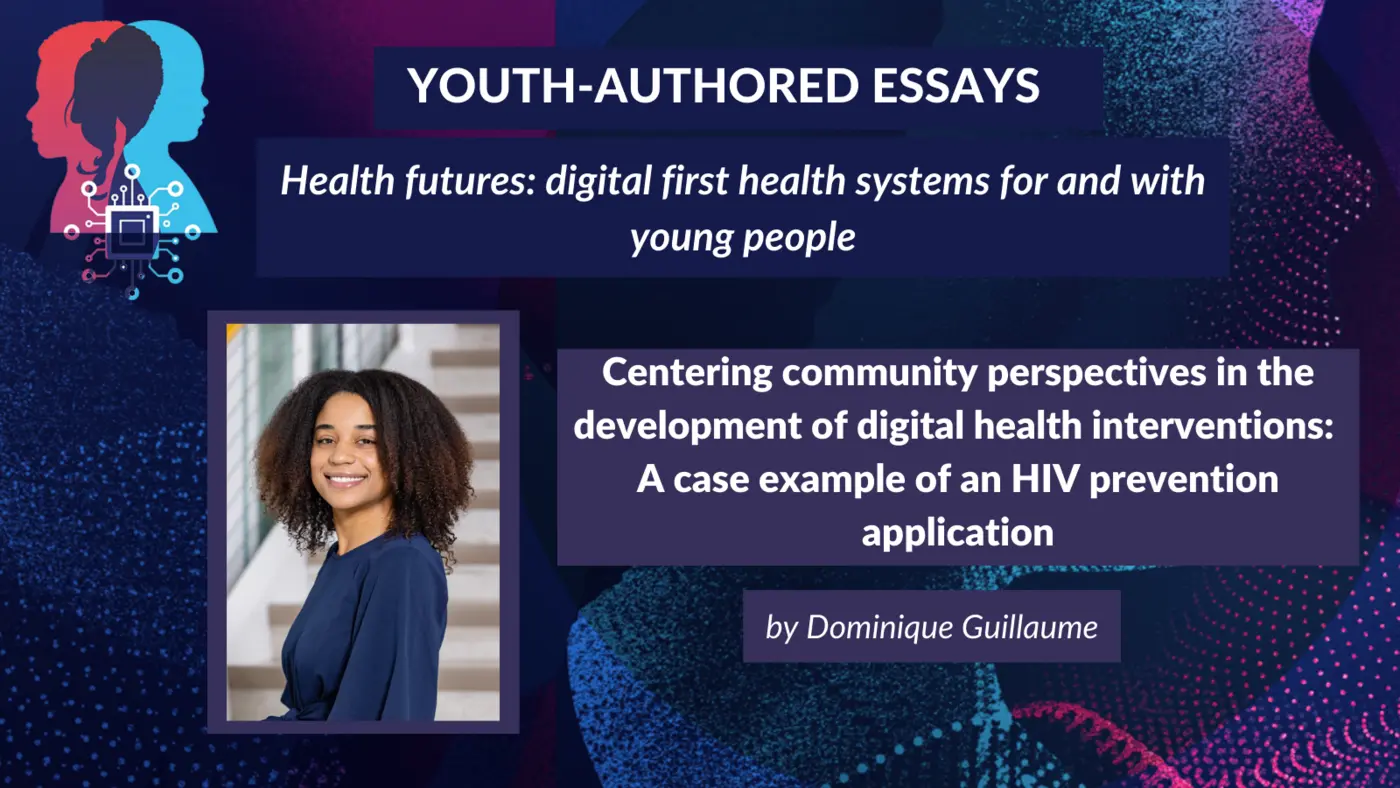This blog is part of a series of youth authored essays on Health futures: digital first health systems for and with young people. The views expressed in this blog are of the author and not of the Lancet and Financial Times Commission on Governing Health Futures 2030: Growing up in a digital world.

Over the last decade, there have been rapid developments in the use of digital health interventions to address health disparities. Such interventions have transformed from primarily one-way SMS messaging to now including features that promote feedback and interactivity through two-way messaging, peer networks, captivating multimedia (e.g. audio content, rich visual interfaces), and social media. As digital platforms have evolved, so has the popularity of digital health programmes which target a diverse array of end-users. Among youth globally, there has been a dramatic increase in smartphone ownership, resulting in prime opportunities to leverage strategies in using digital platforms to address and promote health outcomes amongst youth. In the U.S., there have been a plethora of digital health interventions to address sexual and reproductive health outcomes among youth. Although digital health offers numerous advantages, many of these interventions neglect to address the needs of Black youth- specifically young adult Black women- who experience disproportionate sexual and reproductive health burdens including HIV and sexually transmitted infections (STIs). There is a dearth of evidence on generating relevant tools for Black women living in high-income countries such as the U.S., who may be underserved with less access to health-related resources.
Oftentimes, research that has focused on developing digital health programmes for Black youth fails to incorporate their unique experiences including contextual and cultural nuances. Consequently, this leads to a severe lack of engagement, uptake, and sustainability of digital health interventions within this community. A systematic review conducted by the authors which assessed sexual and reproductive health digital health interventions for Black women in the U.S. found high rates of loss to follow-up and attrition; with participants noting that one of the reasons for not completing digital health programmes was due to not viewing the intervention as being helpful towards their health needs and concerns. Studies have additionally cited that lack of access to the internet and limited data plans function as barriers to engagement in digital health programs within Black communities. These findings allude to the disparities certain populations may face in access to digital health- in certain instances, digital technologies in public health settings may benefit groups that are privileged, and inadvertently potentiate health disparities.
In aiming to alleviate HIV disparities for Black women in the U.S., our research team decided to develop a mobile health application (app) SavvyHER (Sexual/HIV Health Electronic Empowerment Resource) which aimed to reduce HIV risk for young adult Black women. To ensure that SavyyHER was developed using a community-centred approach, our research team conducted extensive formative work with target communities through focus groups, interviews, and human centred design workshops to understand what their health and social priorities were and whether an HIV prevention app would be beneficial for them. In conducting this work, we came to realise that while HIV was somewhat of a health concern in the community, it was not the primary health concern. Communities voiced needing access to mental health resources, primary care resources, contraception and family planning, alongside intimate partner violence resources. Many of the community members we interviewed described how they would not be motivated to download a digital health app that solely focused on HIV prevention. They would, however, download a digital health app that included comprehensive aspects of health and wellness in addition to HIV prevention. We provide examples of feedback obtained from participants who were interviewed.
This participant described that including features such as a menstrual tracker , coupled with content pertaining to contraception and general sexual health would be beneficial. They stated how many of their peers, despite engaging in sex, did not have adequate access to health information:“The app should have maybe a menstrual tracker for people who have an abnormal cycle or whose cycle come on too frequently… [the app should include] questions about birth control, status of the birth control, sexual health… of course condom [use] and everything else. It [the content on the app] also depends on the age that you’re looking to go towards…a lot of people, a lot of women…i’ve talked to some of my friends …they haven’t had a sex talk with their parents. They haven’t had the sex education course in school. They didn’t know things about sex until they start having sex or they start doing things. We have to educate …we as women have to educate other women about their bodies.”
This participant, who was postpartum, voiced wanting more access to mental health content and resources to support her during the postpartum period as opposed to needing solely HIV prevention content: “I would like more on mental health… just more on care for the mom, you know, because during that time, when you have the baby, it’s like a lot you get a plethora of information about caring for your baby and you know, like making sure that they’re good… but it’s like sometimes you get only four or five little things about moms and mental health and postpartum… so I feel like having more information about postpartum, you know, because a healthy mommy means a healthy baby.”
In analysing this feedback, our research team realised that in order for SavvyHER to be effective in reducing HIV disparities, it would have to contain information beyond HIV prevention. Including information on other health topics would motivate users to download the app, and through accessing health content relevant to the end-user, they would also have access to health content pertaining to HIV prevention. In realising this, our research team made extensive changes to the content, features, and design of SavvyHER to ensure that the app reflected the needs of the community. This realisation substantiates the objectives provided from The Lancet and Financial Times Commission Report on putting youth at the centre of digital health innovation, and adapting innovations so that they are responsive towards the needs and priorities of young people.
There is no doubt that digital health can offer innovative solutions in addressing adverse health outcomes. However, in communities that experience competing health, social, and economic burdens, it is critical for programmes to be employed strategically in a manner that aligns with community priorities. As health care becomes more accessible and personalised through technological advances, there is a need for incorporating youth and community-centred approaches that adequately acknowledge and reflect specific needs and health concerns of priority communities. This process will require collaborating with communities, ensuring joint ownership, and eliciting their input regarding desired content and features within all implementation settings globally. In doing so, public trust around digital health and the digital health ecosystem can be boosted, thus leading to further uptaking of digital health interventions as recommended in The Lancet and Financial Times Commission Report. There must be measurable value in implementing such programmes that are backed by robust data, and working alongside communities to ensure that the intervention is being developed in a manner that is relevant and relatable; as opposed to solely using digital health as a “shiny new object” due to its increasing popularity within public health. As illustrated in our case example, incorporating user-centred design frameworks will be essential in ensuring that the content, design, and features of digital health interventions are relevant towards individuals’ lived experiences, with the goal of fostering positive health outcomes.
This article was co-authored by Rasheeta Chandler, Natalie Hernandez, Sherilyn Francis and Andrea Parker.

Dominique Guillaume
Dominique Guillaume is a PhD candidate at Johns Hopkins University and a Jhpiego Global Women’s Health Fellow. She manages the care of patients living with HIV as an infectious disease nurse practitioner, and collaborates on research addressing HIV and cervical cancer disparities within immigrant communities in the U.S. and in sub-Saharan Africa.
-
This author does not have any more posts.


